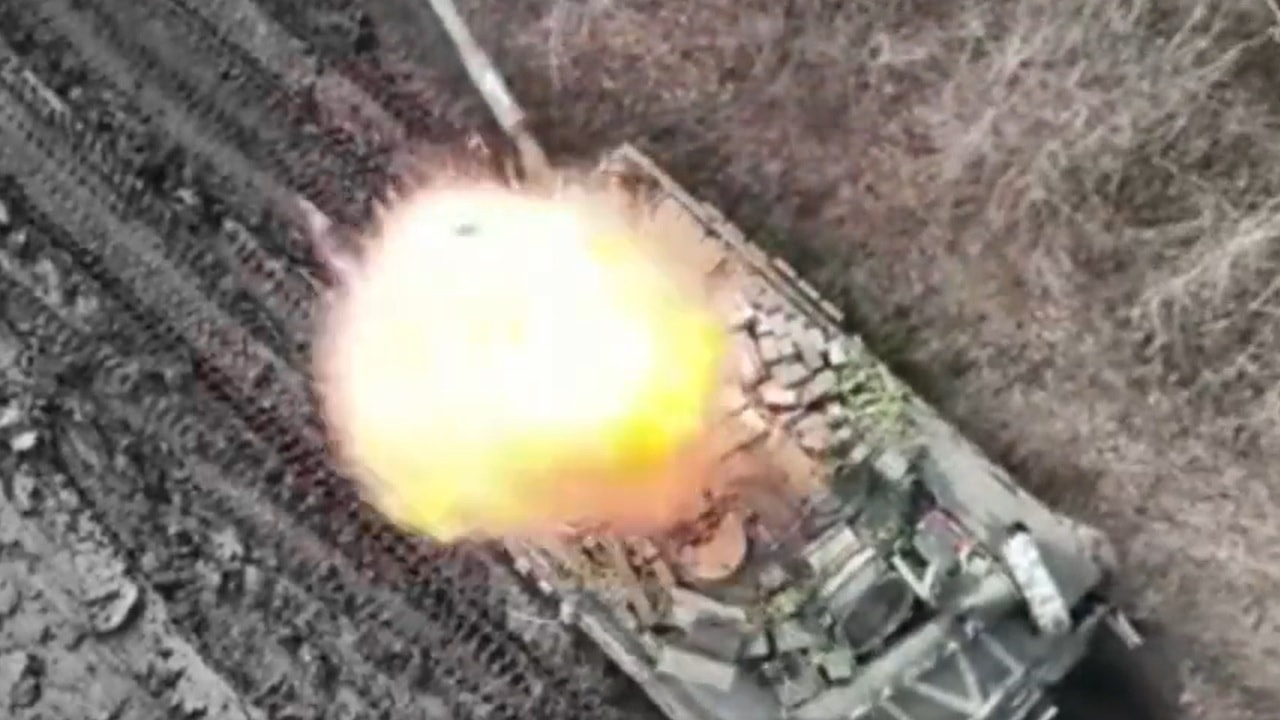While much of Russia’s military equipment has fared poorly over the last year and a half of warfare, its tank fleet has perhaps suffered the most. In the early days of its invasion, Moscow’s tanks poured over the border into Ukraine.
Ukrainian forces defied expert predictions of a rapid capitulation, carrying out a robust defense that continues to stand strong.
How Ukraine Has Destroyed So Many Tanks
Kyiv initially decimated Russia tanks by using anti-armor weapons and taking advantage of urban settings to isolate and wipe out advancing Russian formations. Over time, the U.S. and other NATO allies provided Kyiv with additional anti-tank weaponry that has been wildly effective in countering Moscow’s fleet of main battle tanks.
The American-made FGM-148 Javelin and the FIM-92 Stinger were rushed to aid Ukraine’s defensive efforts at the onset of the war and remain critical components of Kyiv’s strategy.
These anti-armor systems are now supplemented by the M142 HIMARS, the Next-Generation Light Anti-Tank system, and other advanced tank-killing weapons.
Video Shows a Grenade Strike on a Russian T-80 Tank
Although the rampant destruction of Russian MBTs is nothing new, reports of escalating attacks have coincided with Ukraine’s counteroffensive.
Earlier last week, open-source intelligence tracker Ukrainian Front published a video on Twitter showing a strike on a Russian T-80. According to @front_ukrainian, Ukrainian grenades destroyed the tank.
Like many of Russia’s actively deployed weapons, the T-80 was developed in the Soviet era.
The MBT initially entered service with the Soviet army in the mid-1970s, fitted with the turret of the T-62 and incorporating other design features from the T-72. Notably, the tank was the second MBT in the world to feature a gas turbine engine.
Weighing in at around 45 tons, the T-80 is almost half the size of its American M1 Abrams counterpart. The tank’s smaller frame may give it greater mobility, but also leaves it more vulnerable to incoming fire than its larger near-peers.
The T-80 is equipped with a 125mm 2A46 M-1 automatic smoothbore gun, which can fire between 6 and 8 rounds per minute. As detailed by Army Technology, “The gun fires separate loading projectiles, which have a semi-combustible cartridge case and sabot.
Ammunition can be armor piercing, armor piercing discarding sabot, HEAT high-explosive anti-tank, and HE-FRAG high-explosive fragmentation.”
Despite the T-80’s capabilities, it has suffered greatly at the hands of Ukrainian forces. Back in February, the International Institute for Strategic Studies estimated that Russia’s inventory of T-80 MBTs had been depleted by at least two-thirds.
Collected data released by open-source tracker group Oryx indicates that Moscow has probably lost 2,000 of the 3,000 tanks it has deployed in the invasion.
As Kyiv’s counteroffensive continues, additional Western-provided anti-tank weaponry will be delivered to the frontlines. The fate of Moscow’s remaining tank arsenal is not looking too bright.
⚡️The ????????Ukrainian military destroys a ????????Russian T-80BV tank with the help of grenades dropped from a drone pic.twitter.com/dvzMWwsLuh
— ????????Ukrainian Front (@front_ukrainian) August 3, 2023
Maya Carlin, a Senior Editor for 19FortyFive, is an analyst with the Center for Security Policy and a former Anna Sobol Levy Fellow at IDC Herzliya in Israel. She has by-lines in many publications, including The National Interest, Jerusalem Post, and Times of Israel. You can follow her on Twitter: @MayaCarlin.

